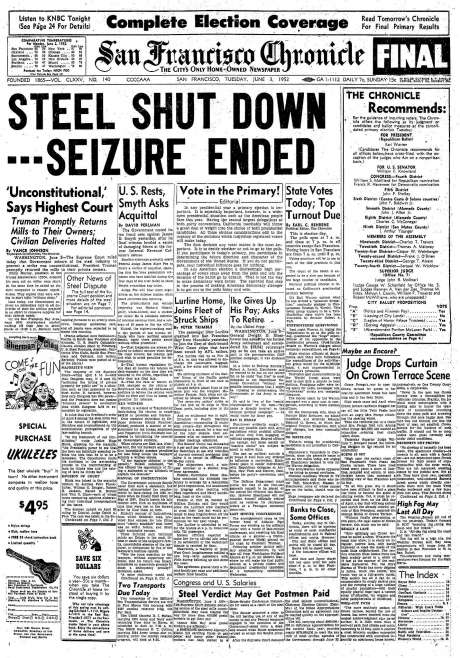Chronicle Covers: The end of the U.S. seizure of the steel industry

The government meddled in the steel industry’s labor talks, but the highest court in the land had the final say.
The Chronicle’s front page from June 3, 1952, covers the end of the federal seizure of the steel industry after the Supreme Court’s decision in Youngstown Sheet & Tube Co. v. Sawyer, prompting another walkout.
“Phillip Murray, president of the United Steelworkers (CIO), ordered his men out on strike once more. At the same time he called on the steel companies to resume negotiations,” the story by Chronicle Washington correspondent Vance Johnson read. “They replied they were willing to start talks ‘without delay.’”
About two months before President Harry S. Truman had nationalized the U.S. steel industry because of a strike threat. That work stoppage would resume after the Supreme Court decision, which affected regions around the country.
“In the San Francisco Bay Area, some 8,000 steelworkers started walking off their jobs in seven plants at 10:30 a.m.,” the story read. “Strikers were tapping furnaces in an orderly shutdown, company spokesmen said, and all plants were expected to be closed this morning.”
The strike would last 53 days, and the labor unions would achieve most of the concessions they had sought before the government seizure.
The Chronicle recommends: This was a primary Election Day, and The Chronicle editors put their picks on the front page. Their choice for the Republican presidential nomination? California Gov. Earl Warren over the next leader of the free world, Dwight D. Eisenhower.